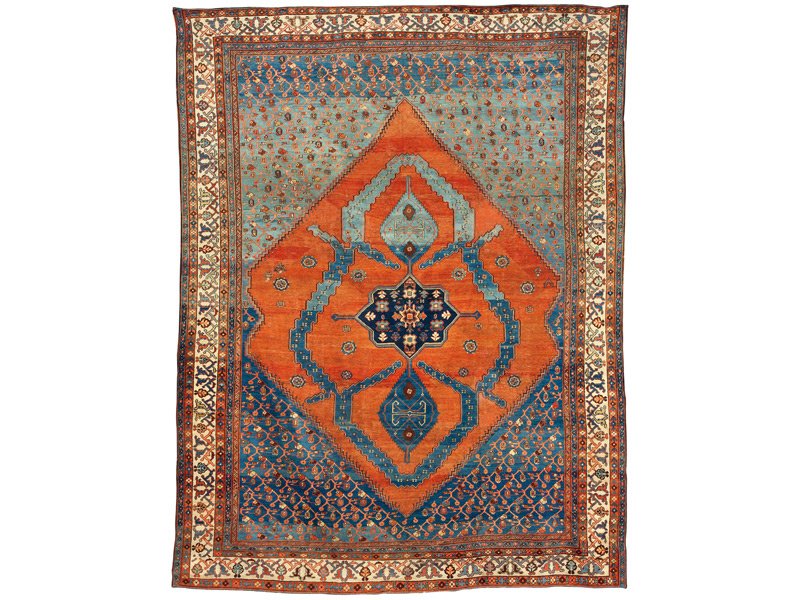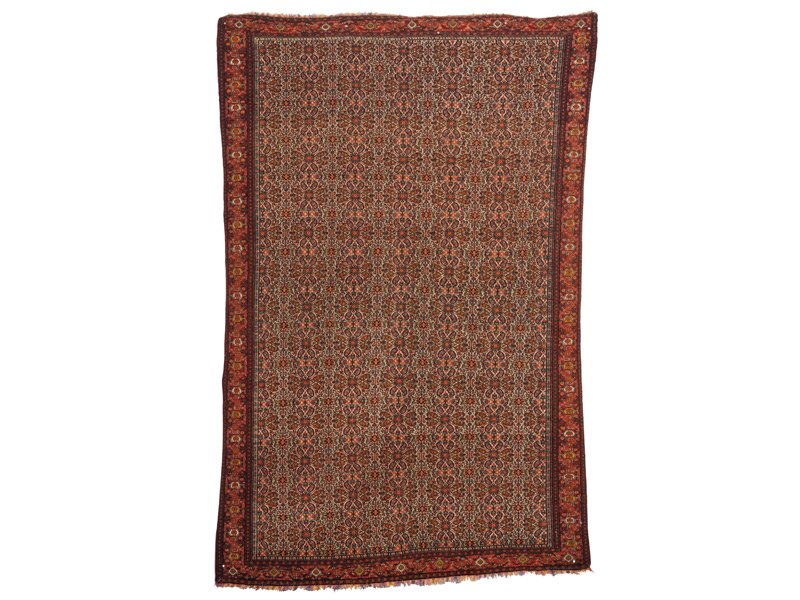A Christie’s Guide to Collecting Rugs and Carpets
Christie’s New York-based rugs and carpets expert Elisabeth Parker offers her top tips for buyers, collectors, and auction-goers who want something truly special under foot
Christie’s New York-based rugs and carpets expert Elisabeth Parker offers her top tips for buyers, collectors, and auction-goers who want something truly special under foot
More than simply an accessory to provide warmth and comfort, a good rug can function as a piece of art in its own right, and even dictate the style of a room. If you’re looking to invest in one, there are several things to keep in mind. Elisabeth Parker, International Head of Rugs and Carpets at Christie’s, tells us what to look for – and what to avoid – when buying a new rug or carpet.
What kind of rugs are especially collectible and why?
The carpet market has two threads: collectible and decorative. Collectible rugs tend to be small, tribal in nature, and woven by nomadic and semi-nomadic groups. Caucasian rugs, such as Kazaks, Shirvans, and Seychours, are quite popular due to their colorful and graphic nature. They can adapt to almost any interior and are small enough to hang on the wall or grace the floor of most rooms. Finely woven, small-city Persian carpets from the 19th century are also highly sought after and collectible.
The market is quite strong for examples that are woven in silk or wool, sometimes on a silk foundation, with designs that can be quite intricate. Condition is very important and carpets need to be in nearly original pile with no imperfections in order to command the attention of collectors. The decorative market is much more varied and follows the trends of interior designers. Recently I am seeing a shift from pale and soft palettes to the more traditional and formal designs of city carpets such as Isfahan, Kirman, and Tabriz.

What are the current trends in collecting rugs?
The strength of the antique-carpet market is really in rare examples that date to the mid-19th century and earlier. Rugs and carpets woven during the Safavid, Ottoman, and Mughal periods are rare and highly sought after by individual collectors and institutions. One can be less forgiving of condition, but color, design, and rarity are important. Right now is a great time to buy decorative carpets from the late-19th and early-20th centuries, especially carpets that may have a low pile and some minor restoration but still maintain a patina that immediately reads as antique.
What should buyers look out for?
First of all, if it is a rug or carpet that is going to be used on the floor, you have to love it. You will be looking at it every day and it can dominate a room and dictate other design choices. Educate yourself and look at as many carpets as possible so that you can fine-tune the type of carpet that you like. In general, carpets take on the name of the city, village, or tribe that wove them. City carpets, made in established workshops, tend to be finely woven with dense floral designs. More graphic in nature, village carpets use bold colors and have a thicker knot. Tribal rugs tend to be smaller in size with stylized floral and geometric forms.
Look for designs that are well-balanced in use of color, design, and border-field ratio. Finding the right size for a space is also important. If looking for a dining room carpet, make sure that all the chairs fit comfortably on the carpet. A carpet that is too small can throw off the balance of the entire room. If using a carpet on a wood floor, ideally 6-18 inches of floor should be exposed on all sides.

What should buyers avoid?
If you are looking for an antique carpet, ask about condition and avoid carpets that have any use of “tint.” This is a restoration method that is used when the pile is so worn that all that is left is the white cotton warp and weft: in order to disguise the white areas, paint or a colored marker is used. As a rule, I would avoid carpets with other serious condition issues, like tears and holes, as those areas will only get worse with day-to-day use. There are many new carpets that are quite exciting, but they can be more expensive than antique examples – but just be aware that like a new car, the value diminishes as soon as it is put to use, and it can be very hard to resell a new carpet. There are fakes on the market that are very cleverly made and even the most seasoned expert has been fooled.
For dates of upcoming sales, visit www.christies.com